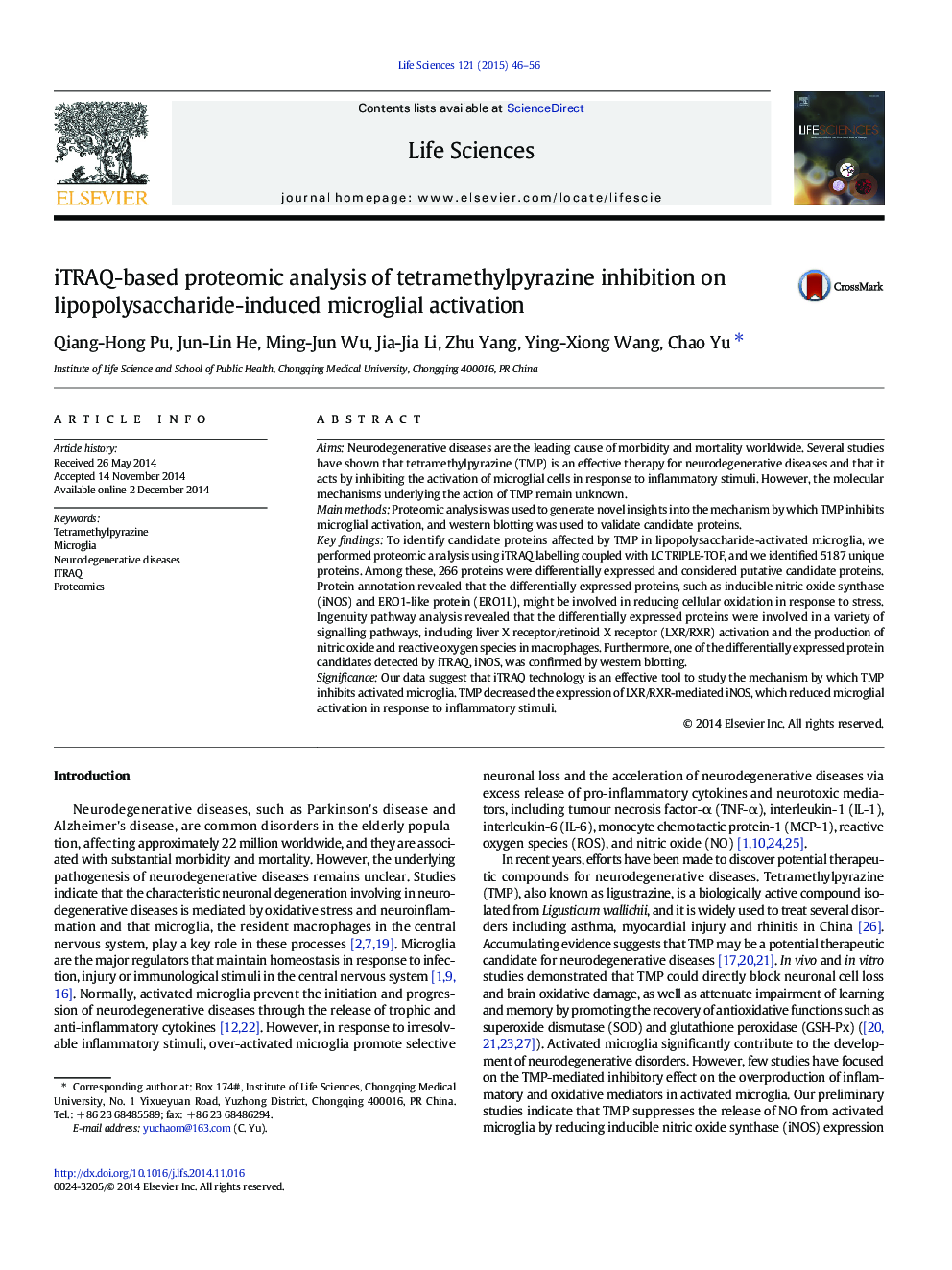| Article ID | Journal | Published Year | Pages | File Type |
|---|---|---|---|---|
| 5841810 | Life Sciences | 2015 | 11 Pages |
AimsNeurodegenerative diseases are the leading cause of morbidity and mortality worldwide. Several studies have shown that tetramethylpyrazine (TMP) is an effective therapy for neurodegenerative diseases and that it acts by inhibiting the activation of microglial cells in response to inflammatory stimuli. However, the molecular mechanisms underlying the action of TMP remain unknown.Main methodsProteomic analysis was used to generate novel insights into the mechanism by which TMP inhibits microglial activation, and western blotting was used to validate candidate proteins.Key findingsTo identify candidate proteins affected by TMP in lipopolysaccharide-activated microglia, we performed proteomic analysis using iTRAQ labelling coupled with LC TRIPLE-TOF, and we identified 5187 unique proteins. Among these, 266 proteins were differentially expressed and considered putative candidate proteins. Protein annotation revealed that the differentially expressed proteins, such as inducible nitric oxide synthase (iNOS) and ERO1-like protein (ERO1L), might be involved in reducing cellular oxidation in response to stress. Ingenuity pathway analysis revealed that the differentially expressed proteins were involved in a variety of signalling pathways, including liver X receptor/retinoid X receptor (LXR/RXR) activation and the production of nitric oxide and reactive oxygen species in macrophages. Furthermore, one of the differentially expressed protein candidates detected by iTRAQ, iNOS, was confirmed by western blotting.SignificanceOur data suggest that iTRAQ technology is an effective tool to study the mechanism by which TMP inhibits activated microglia. TMP decreased the expression of LXR/RXR-mediated iNOS, which reduced microglial activation in response to inflammatory stimuli.
Graphical abstractDownload high-res image (102KB)Download full-size image
